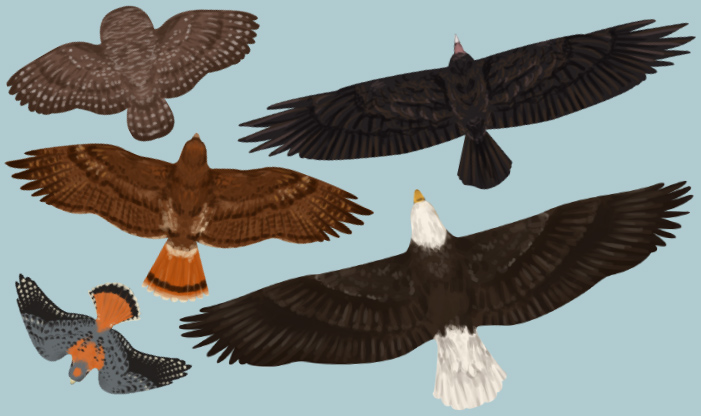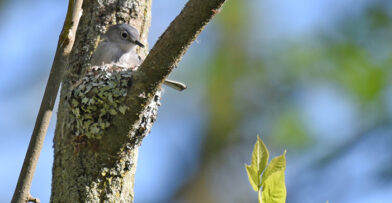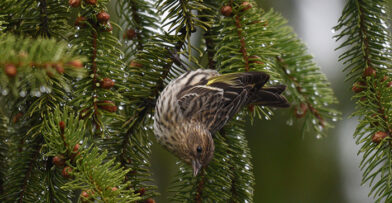During the warmer months, countless songbirds flit over our heads – often too quickly to identify. Distinguishing raptors is a bit easier, as their larger size and method of flight means they can’t maneuver as quickly as songbirds. Wisconsin is home to many Midwest raptors – falcons, owls, hawks, and eagles, and each of these animals has a distinct silhouette that can be used to identify them as they fly overhead. A strategy to determine which bird you’re seeing is to pay close attention to wing shapes and flight patterns. These factors help them fit perfectly into a niche in their environment, and can be used to determine where the birds live and what they eat.
From Fast and Frantic to Slow and Silent
Falcons are some of the fastest animals on the planet. Their stiff, long, and pointed wings allow some of them to dive at speeds over 200mph. It also gives us a clue that they are hunting other fast animals, like pigeons and songbirds. Their slender wings come at a cost; with less surface area these birds have to flap more often to remain aloft. When looking for falcons, watch for slender, triangular wings that flap almost constantly.
Owl silhouettes are just the opposite: broad, soft, and round. Special ridges on the edges of their wings ruffle the surrounding air, allowing them to fly with complete silence. These larger wings tell us that owls aren’t moving very fast, therefore relying on stealth rather than speed to catch their prey. The big wings of these Midwest raptors also take more power to move, which means that owls don’t flap them as often as falcons do. As sound won’t alert you to their presence, keep your eyes peeled for big wings that flap slowly, steadily, and in shallow movements.
Commonly Seen Midwest Raptors: Hawks and Eagles
Hawks fall somewhere in the middle of the two preceding groups; they have broader wings like owls, but the feathers are also somewhat stiff like falcons. However, there are two groups of hawks with unique patterns of movement. Buteo hawks have broad wings and a shorter tail that fans out and are made for soaring. These birds rarely flap at all, as they take advantage of warm air thermals to move around. Accipiter hawks have relatively shorter and more slender wings and a longer tail that allows them to live in forests and maneuver quickly through trees. Accipiters flap more often, as they move quicker and have to constantly change direction around obstacles. Watch for a flap-flap-flap-glide pattern from Accipiter hawks.
Bald Eagles have a similar silhouette to Buteo hawks, but are much larger and darker in color. When looking for eagles, keep an eye out for huge, broad, and brown-black wings with slotted (finger- shaped) feathers at the tips of the wings. These birds will be seen soaring when they can, and working hard for slow wingbeats in otherwise gliding flight. Their wings are held straight out at right angles from their big bodies.
One large species commonly seen in Wisconsin is often mistaken for eagles, and while being a bird of prey, is in fact not a raptor at all. These scavengers have a six-foot wingspan, and are experts at soaring on warm air thermals – they are Turkey Vultures. Turkey Vultures have an unmistakable flight pattern. Groups of them, referred to as “kettles,” seek out columns of rising air and circle within it, so they rarely have to flap their wings at all. They commonly look like they are “teeter-tottering”, or rocking back and forth to stay afloat as the air moves. Watch for a silhouette that looks V-shaped and for a flash of silver feathers underneath their bodies as they soar overhead.
The Schlitz Audubon Raptor Program has a variety of eagles, hawks, owls, falcons, and even a Turkey Vulture that serve as educational ambassadors for their species. Tallulah, the Turkey Vulture, is trained in free flight, and wows the crowds when it shows off its impressive wingspan by flying directly over the audience. Seeing this bird spread its wings in free flight programs can help you identify animals when you spot Midwest Raptors in the wild.
Raptor Illustrations by Chelsea Beiler


